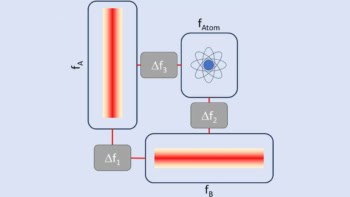When the comet Shoemaker-Levy 9 crashed into Jupiter in 1994, scientists told the public that the chances of a similar impact on the Earth were extremely low. Now a paper in Nature claims that such an event occurred 214 million years ago during the Triassic period.
Simon Kelley of the Open University in the UK, John Spray of the University of New Brunswick, and David Rowley of the University of Chicago in the US, reached this startling conclusion while trying to calculate the precise age of the Rochechouart meteorite impact in France. Geologists have recorded over 170 impacts in the Earth’s past, but the age of the craters is very poorly understood. Kelley and Rowley were using a laser to measure argon-39 and argon-40. “The problem with impacts is that very little material is left, ” says Kelley. “With a spot-laser dating technique, however, we can look at very small areas one tenth of a millimetre in size.” The results of the experiment placed the formation of the crater 214 million years ago. Rowley realised that a similar crater in Canada was roughly the same age. A further search produced 5 other candidates in the same time period, with diameters varying from 9 km to 100 km. When the impact sites were marked on a computer reconstruction of what the Earth’s surface is thought to have looked like during the Triassic era, all the craters appeared at the same latitude with a variation of 75 miles. Kelley says that the results came as a complete surprise, and that the odds of three craters of the same age creating such a formation randomly are 1 in 33 million. In their paper Kelley, Spray, and Rowley, urge other scientists to look for mass extinctions during this time period.



